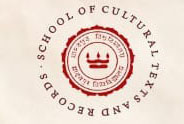
The Berlin Phonogramm-Archiv catalogue describes Ranjan Shaha as Bettelnder Berufssänger, which suggests an itinerant singer who lives by madhukori or collecting alms. Ranjan Shaha was a honey-gatherer.
It is strange to write a session note more than a decade after a field recording trip, to recall details of an experience of 2009 in 2020. Now, it is the recording that has to take us back to that day, also the photos and recordings from days before and after the session. That is […]
Mainadal is a village in Birbhum district, West Bengal, 215 km northwest of Kolkata. It is home of the famous Mitra Thakur family, known for their practice of kirtan around the shrine of Chaitanya Mahaprabhu, who has been their house deity since the beginning of Vaishnavism in Bengal, about 500 years ago. We reached Mainadal […]
When Gour Khepa succumbed to his fatal injuries from a road accident in a hospital in Kolkata on 27 January 2013, there were many friends and bhaktas (devotees) waiting outside to take him to his samadhi or burial in Kankalitala, not far from his home in Bolpur, Birbhum. There this wild and restless artist would […]
The senior baul singer, Fulmala, was passing by our room in Kenduli when Debdas Baul’s youngest son, Uttam, saw her and invited her in. She stopped for this short interview and a couple of songs, recorded on camera by Sudheer Palsane. Fulmala said, ‘Those days when I could really sing are gone’. Even though she […]
Ashalata was magical on stage, performing the birth of Krishna through song, narration and dance. Now she was Basudeb, Krishna’s father, now Kangsha, his wicked uncle, now Jashoda, his adoptive mother. Her team of musicians, including her brother and her husband, both khol players, supported her as she made this mythological tale come alive for […]
This video was shot by Sudheer Palsane and the audio recording was made by Sukanta at the home of Golam Shah, a fakir from Shaspur in Birbhum. Golam Shah was a little over 60 years, but he looked much older, more so because he had not been keeping well. He had been hospitalised a few […]
I had heard about the singer Debdas Baul’s long association with researchers and filmmakers, especially Bhaskar Bhattacharya (who passed away in 2006), and I was told he understood the ‘outsider’s’ needs very well. Rangan Momen had said: You must meet Debuda, he will know where to take you. During these last six years, Debdasda has […]
This was my second field trip with Sukanta. The first one had also been to the temple town of Tarapith for the songs of the blind singer, Kanai Das Baul, but the session had got washed by rain, so we had decided to return the following week. My familiarity with the music of Kanai Das […]
I met the Baul couple, Shyamsundar Das and his khepi or partner, Kalpana Dasi, at Bolpur station. It was Nimai Chand Baul, the dotara player and singer, who had told me about Kalpana; he said she was one of the prominent women singers among the bauls now. I was interested, because you don’t get too […]
This was my first field trip, a kind of recce before the formal start of my IFA-supported project to explore biraho in the folk repertoire of Bengal. I went with my friend, Sudheer Palsane, a cinematographer. He had a Sony PD 150 DV camera, which was our recording equipment for the session. The reason for […]

After 2017, I met several people, native speakers of Santali or scholars, with whom I listened not only to Bake’s recordings but also to The Travelling Archive’s recordings from Dumka. They had an insider-outsider perspective on the recordings.

They were all insiders to the sound of Arnold Bake’s recordings from the Dumka Hills, yet they were all different too. The listening sessions in Kairabani, Harinsingha, Jamuasol and at Johar and NELC in Dumka in Dumka town, revealed a range of reception and interpretation of the sounds held in Bake’s Santal cylinders.

This rare and precious recording would have stayed in the British Library Sound Archives, unnoticed, unnamed and unplayed, had I not accidentally come across it in 2018. The process of naming Nabanidas’ voice was a longwinded journey. Young Purna Das Baul was in the concert with his father Nabanidas in 1956. In 2019, it was very emotional for Purna Das to listen to his father, sister, brother-in-law and friend, as well as to himself as a young man.

Arnold Bake knew that students from Manipur used to come to Mainadal to their ‘tol’ to study the kirtan with the Mitra Thakurs. When he came to India for the last time in 1955, he wanted very much to go to Manipur, but couldn’t. What would he find if he went there then? How is kirtan performed in Manipur now?

Laksmisvar Sinha had come to Santiniketan from Rarishal in Habiganj, Sylhet, now in Bangladesh. He was an explorer at heart who travelled to many lands and later became and a practising Esperantist, yet he remained rooted to his soil through his songs. I went looking for him in many places and found much more than this little archive can hold.

These are 17 clips of varying length from footage of 1994, in which there are kirtaniyasfrom Mainadal whom Arnold Bake had recorded in 1933, as well as some whom we met in 2014 and later. Hence, there is a continuity here, of almost a hundred years, of a family that has been singing kirtan for five centuries.

Imam Bux Boyati and his team, jarigan singers from Atharobari, Mymensingh, were recorded on 23 February 1932 at the Suri Mela, Suri, district headquarters of Birbhum. They were recorded twice, on film in 1931 and then on wax cylinders, Bake India II/112-17 the next year. It was Gurusaday Dutt, the district magistrate who organised the festival.

This was the materialisation of that trip to the festival of the bauls that Arnold Bake had been planning with Kshitimohan Sen ever since he came to Santiniketan for the first time in 1925. In 1932, his companion was not Kshitimohan however, but his trip with Corrie and others was facilitated by the District Magistrate, Gurusaday Dutt…

All that we get from the catalogue of Arnold Bake’s cylinders is that on 19 August 1933, he recorded a ‘Song of labour’ of some ‘Baori women working on the roof of the post office’, in Santiniketan. Their names, age and where they came from remains unrecorded.

We went to Helim Boyati of Rajibpur, Netrokona, to ask about jarigan and puthi-path. A living master of these forms, he talked about how things were in the past and how they are changing and sang and recited songs and stories for us. This was in 2019.

Between 24-26 November 1931, Arnold Bake had made recordings on cylinders and film of the Rash Utshob in Mongoldihi village in Birbhum, halfway between Suri and Santiniketan.I went to Mongoldihi on another 25 November, 84 years after Arnold Bake. I went with the painter Milan Mitra Thakur, whom I had first met in Mainadal.

Chitralekha Choudhury is a renowned Rabindrasangit singer, who studied in Santiniketan in the 1950s. Her mother, the painter Chitranibha Choudhury was one of the first female students of Kala Bhavan in the 1920s. When Arnold Bake had recorded Chitralekha in March 1956, she was a young girl of fifteen. When I went to meet her with her song in Kolkata in 2015, Chitralekha had many great stories of historical significance to tell.

During this trip to Mainadal in Birbhum, West Bengal, following sounds recorded by Arnold Bake in 1933 and Deben Bhattacharya in 1954, seeds of a relationship of sharing and trust were planted, which have borne fruit over these past eight or so years, leading to the digging into family archives by the Mitra Thakurs.

This is an audio-video installation artwork we created as The Travelling Archive, for an exhibition on early sound recording in India, ‘La Presencia del Sonido’ (The Presence of Sound) held at Foundacion Botin, Santander, Spain in August-September 2013. The exhibition was curated by Nida Ghouse and Nuria Querol. The Travelling Archive wrote a long essay […]
This is a ‘lesson’ I had with Nirmalda, Nirmalendu Mitra Thakur, at the home of his cousin, Milan Mitra Thakur, both of the Mitra Thakur family of Mainadal, in Birbhum, who were recorded by Arnold Bake in 1933. The song I am drawn to is one we first heard during their Janmashtami and Nandotsav festival […]

Nimai Chand Goswami, the baul musician who passed away on 14 June 2014, was on our first ever field recording session. Moushumi had been to his house in Suripara, Bolpur in November 2003 with Sudheer Palsane, who recorded the session on a Sony PD 150 DV camera, even before the first IFA grant was announced. […]




















 Moushumi will present at a workshop on THE ARCHIVE AS A KNOWLEDGE SITE: THE EXPERIENCE OF EUROPE AND INDIA, Organised by SCTR, JU in association with CNRS, France and IRN-AITIA.
Moushumi will present at a workshop on THE ARCHIVE AS A KNOWLEDGE SITE: THE EXPERIENCE OF EUROPE AND INDIA, Organised by SCTR, JU in association with CNRS, France and IRN-AITIA. Moushumi spent five days with students and teachers of the Tata Institute of Fundamental Research in Mumbai and also spoke at the Homi Bhabha Centre for Science Education. Her main talk was on The Travelling Archive
Moushumi spent five days with students and teachers of the Tata Institute of Fundamental Research in Mumbai and also spoke at the Homi Bhabha Centre for Science Education. Her main talk was on The Travelling Archive






